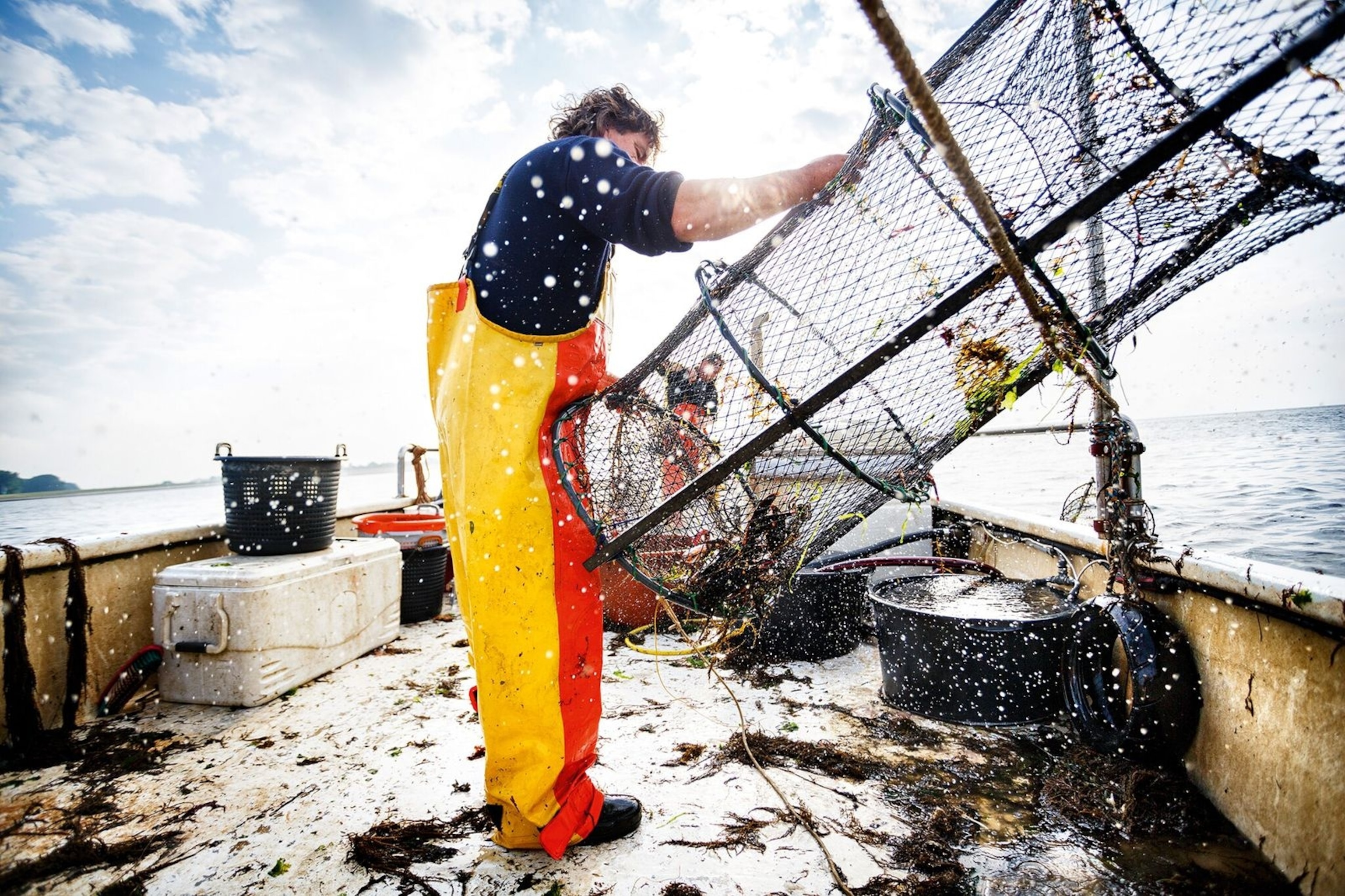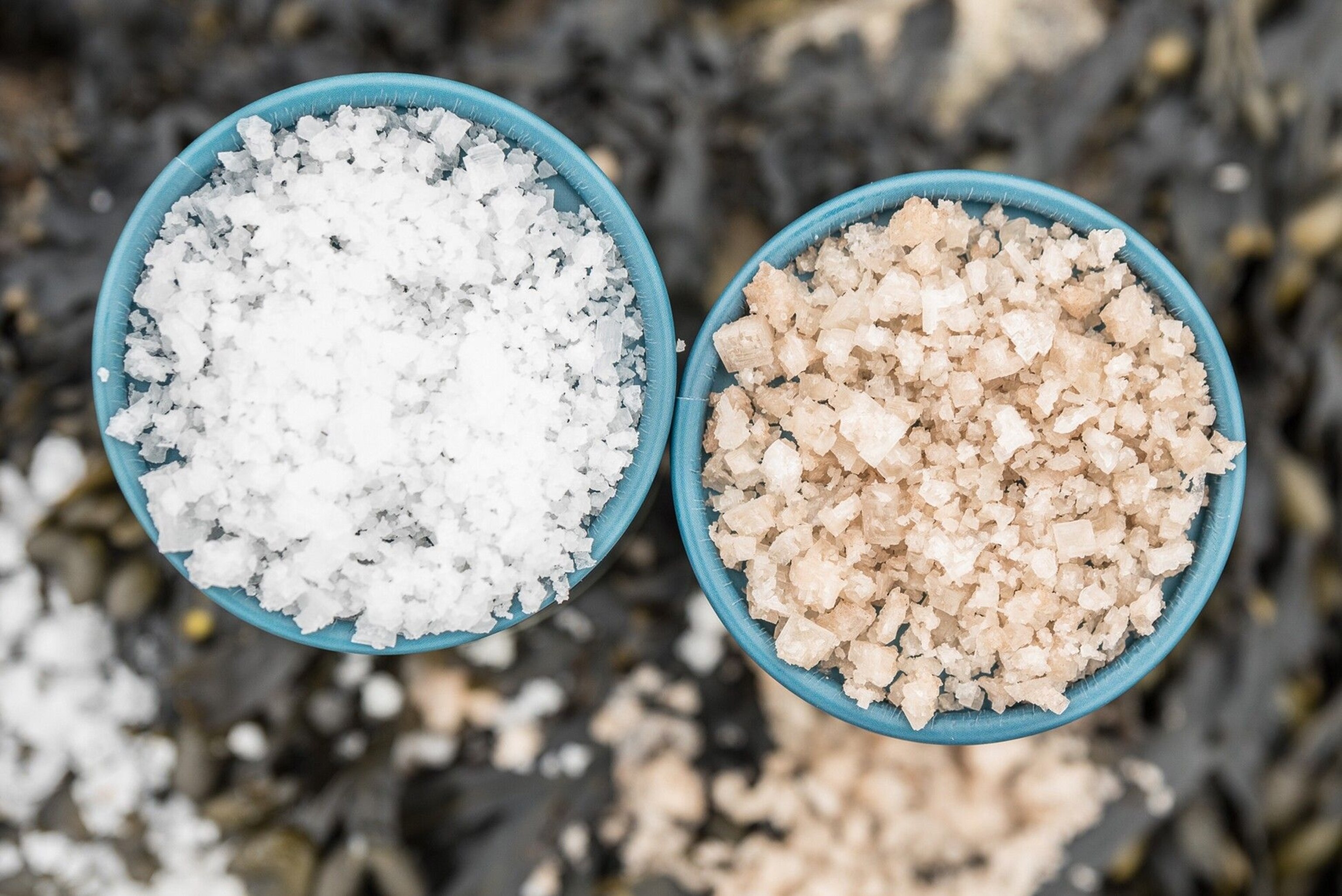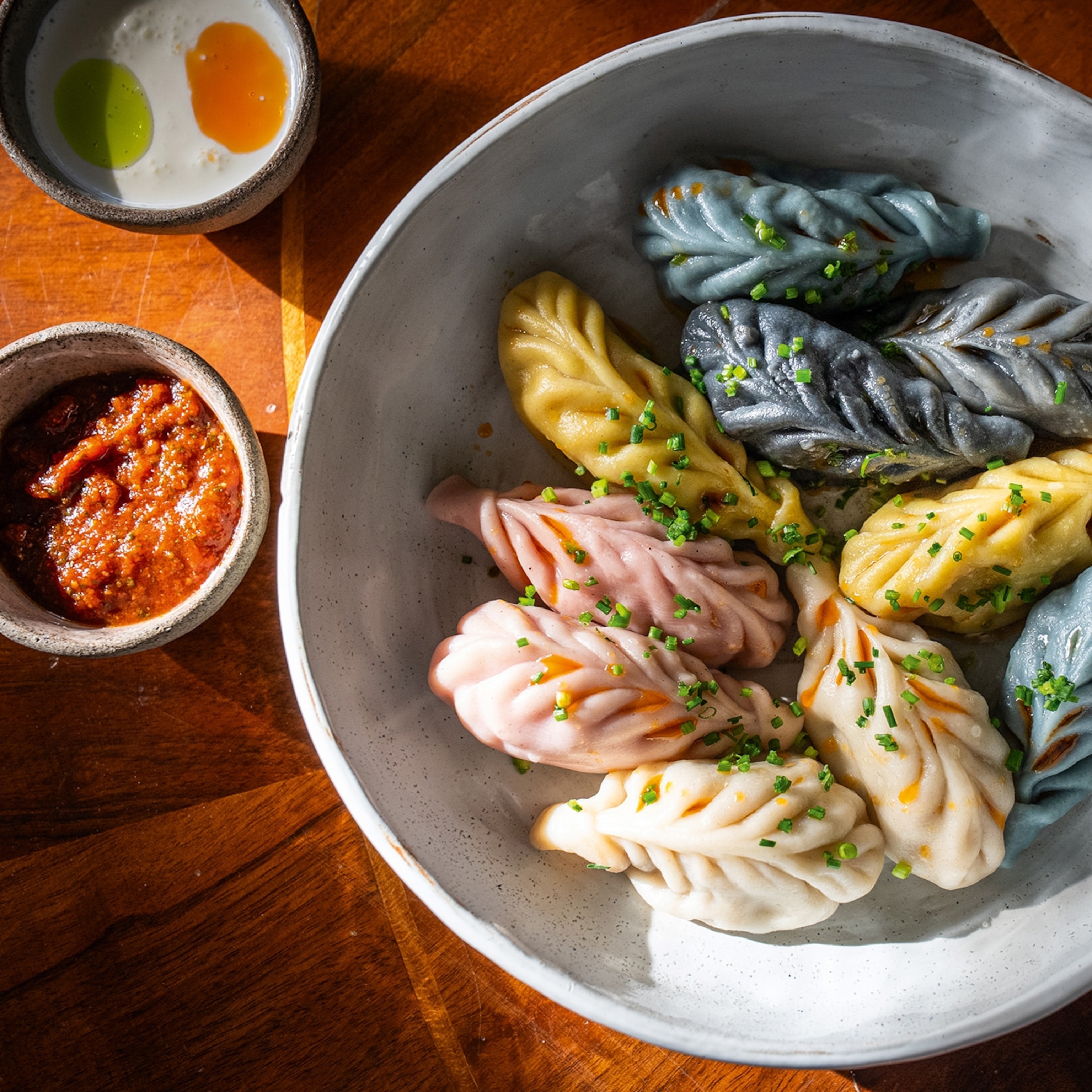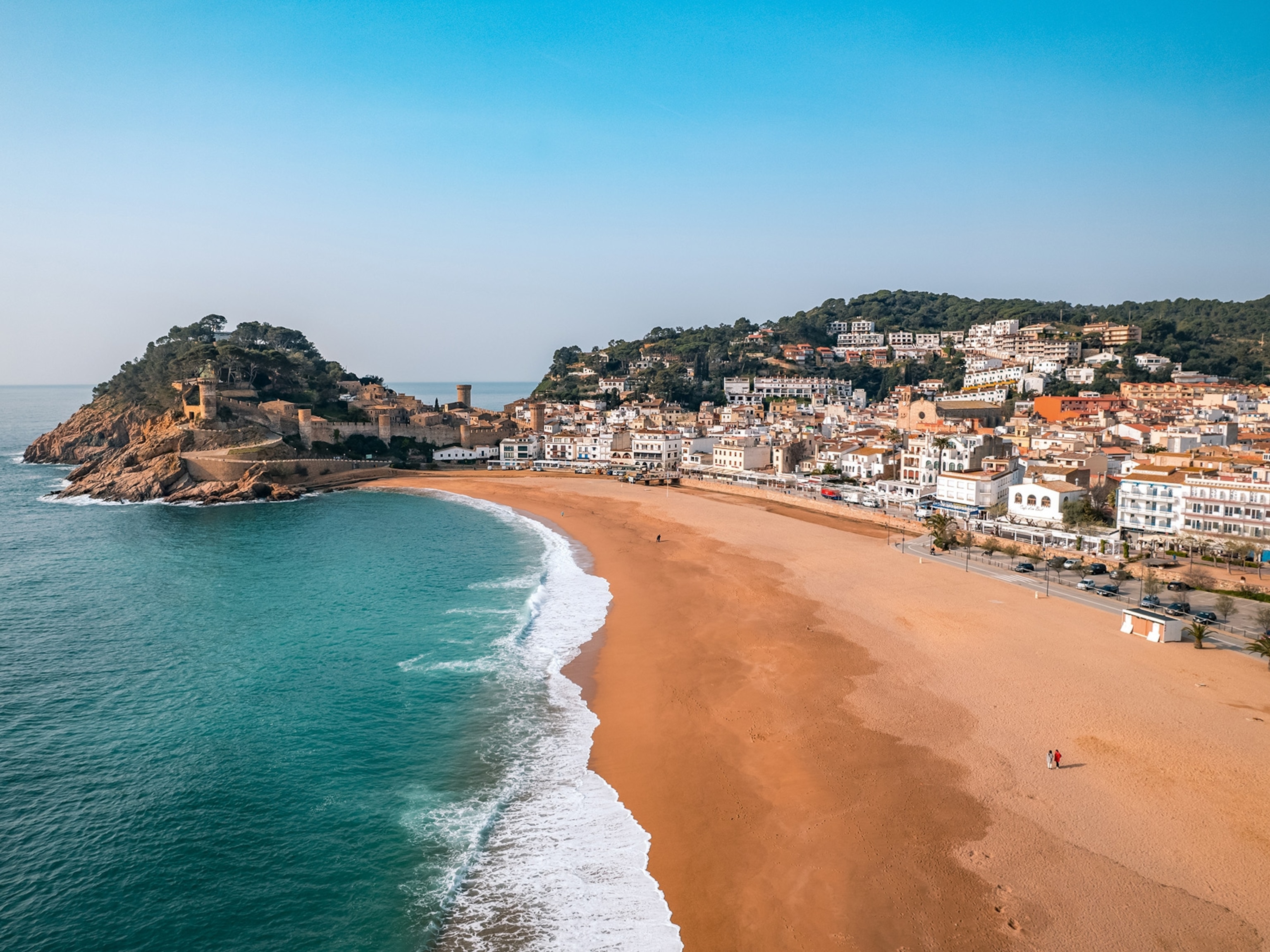
A culinary guide to Zeeland, the Netherlands' 'Land on Sea'
This coastal Dutch province — its name translated as ‘Land on Sea’ — is a place where local producers have an intense connection to the water, making the most of its natural bounty.
It’s early morning and I’m looking out at the flat, silvery waters of the Eastern Scheldt, waiting to meet fisherman Gerrie van den Hoek. Despite the spring sunshine and the calm surface of the estuary, the wind deals me a body blow when I get out of the car to greet him.
As we walk to the water’s edge, Gerrie’s 19-year-old son, Robin, approaches in his motorboat, the mirror-smooth water breaking as if for the first time. It’s only the second day of the Eastern Scheldt lobster fishing season, which runs from the last Thursday in March to 15 July, and for now we’re the only people on the water. “It used to be a race,” Gerrie tells me. “At 9am on the first day of the season, all the boats would be lined up ready to claim the best fishing spots. People bought the biggest, fastest boats they could to beat the others. Now the fishermen in the co-operative can draw lots, so it’s much more relaxed.”
On these waters — and those of the North Sea beyond them — fishermen from around 30 companies spend six days a week on the water from March to January, first catching lobster and then fish such as eel, sole and Atlantic wolffish. Getting a good spot is vital — with Eastern Scheldt lobsters fetching €55 (£47) a kilo wholesale, this is the most lucrative season in the local fishing calendar.
We motor to the first of the men’s four ‘lines’ and I watch as they heave the 10 cages out of the water one at a time to retrieve their catch, working their way along the rope connecting them. It’s rhythmic, efficient work. Soon eight lobsters are shuffling around the boat’s floor, claws aloft. Crabs go into a box, while everything else — even whopping great fish — is hurled overboard. The traps are re-baited and dropped, one by one, back into the water as the boat reverses.
With seagulls wheeling overhead, Robin expertly bands the lobsters’ claws and measures the smaller catch. Young lobsters and crabs are thrown back into the sea. “There’s always next time,” says Gerrie.
At one point, he shows me the underbelly of a large female lobster, berried with eggs. She, too, will be released “for the future”.
The fishermen know this restraint and respect for nature will ultimately keep them in business, but it must be hard to set a two-kilo creature free, given its value, the short season and high demand. Still, with a haul of 25 lobsters now confined to a water tank, plus a boxful of brown crabs, today’s been a good day.
The Eastern Scheldt is the largest national park in the Netherlands; as well as birdlife and seals, it’s also home to porpoises, more than 70 fish species, hundreds of different types of aquatic plant, vast beds of shellfish and, of course, the famed crustaceans.
Thanks to the large population of shellfish filtering the tides that wash over the sandbanks, the water is naturally clean and clear, with a unique mineral, plankton and algae content. It’s one of the reasons medieval Zeeland was a leading producer of salt, then a luxury commodity. Salt-making was eventually banned here because the medieval method, which involved burning waterlogged peat in the dykes to extract the salt, increased the risk of subsidence and therefore flooding.
Fascinated by this history, local entrepreneur Christian Clerx decided to try making salt himself, in a sustainable way. In 2018, he carried a jerry can of saltwater to his mother’s house, boiling the contents and drying the resulting crystals in her kitchen. That first triumph was enough to convince him to establish Zeeuwsche Zoute, the country’s only artisan saltworks, in the fishing village of Bruinisse.
I drive with Christian and his right-hand man, Wim Jumelet, to the water’s edge to collect saltwater. The men unwind a long blue tube attached to a tank on the back of their flatbed van, stick it into the water and start the pump attached to this homemade device. After a week of heating, evaporating, filtering and drying back at the factory, this container of water will yield 35kg of salt crystals. The artisanal approach Christian and his team take — hand-skimming the calcium from the harvested salt, drying it slowly at a low temperature — results in snow-white, pyramid-shaped flakes with a pure flavour that expresses their terroir.
Wim joined the company when Christian was still using a giant bunsen burner to boil his saltwater; he too became immediately hooked on salt. “I remember my children’s concern about me getting involved with someone who makes white powder,” grins Wim. “Our approach may be hobbyist, but we’re continuously devising ways to make our processes more efficient.”

These innovations include heating the saltwater using solar power and recycling waste produce: distilled water is donated to a local window-washing company, while that skimmed calcium is used as plant food by samphire farmers. It’s another example of Zeelanders’ ingrained respect for nature — a sense of give and take that comes from co-existing with the sea.
Christian isn’t the only Zeelander to see the business potential of his province’s natural resources. Ten years ago, cockle fisherman Jan Kruijsse noticed Japanese companies marketing a familiar product: seaweed. “I thought: hey, we’ve got that,” he says. Jan set about procuring a licence to hand-cut seven of the 150 varieties of seaweed growing on the banks of the Eastern Scheldt nature reserve — among them sea lettuce, sea oak and even wakame (which had originally arrived here as a stowaway on the bottom of boats). His customers now include Zeeland’s eight Michelin-starred restaurants (more than any other province in the Netherlands).
Of course, visitors can also forage for their own meal, as Dirk-Pieter Arkenbout (known as DP, chef-patron of Brasserie Vluchthaven) shows me. He takes me to the Tholen, peninsula, just west of Sint-Annaland, and we walk the coastline at low tide in search of native pullet carpet shell clams and immigrant palourde clams. As we walk, we nibble on sea oak and shuck oysters straight off the rocks; they’re small, sweet and taste of the sea.
Further along the coast, DP finds a tidal pool and starts digging into the clay-like sand. “If you hit a rich seam, you’ll find bucketfuls,” he says. By law, anyone can gather up to 10kg of shellfish from the beach for personal use. But our bucket remains virtually empty. On we trek, the wind whipping away DP’s words. “We’ll follow the birds,” he tells me. “They know where to look.”
After two more digs, and with the tide rising, we abandon our quest with just a handful of clams. Back at the van, DP has a treat in store: an Eastern Scheldt lobster, which he slices in half and pops onto a makeshift barbecue. A few minutes later, I’m standing by the van, scooping the sweet meat from its shell with my fingers.
In 1953, DP tells me, a storm caused the sea to breach the dyke we’re standing next to, claiming 1,836 lives and destroying whole villages. Although the dyke is now higher and a fortified storm barrier protects the Eastern Scheldt, events such as these remind locals the land here belongs to the sea (all around us, water inches onto fields and mudflats, trying to reclaim it). It’s Zeelanders’ connection with the sea that will keep the region’s natural larder stocked for future generations.

Where to eat in Zeeland
1. Inter Scaldes, Kruiningen
Not only has chef-patron Jannis Brevet scaled the heights of haute cuisine (Inter Scaldes holds three Michelin stars), he’s also an artist. His paintings and sculptures decorate this manor house hotel and restaurant, which he runs with his wife — and maître d’ — Claudia. Picture-perfect dishes include Dutch shrimp with sea buckthorn, mandarin and hazelnut, and octopus carpaccio with sea banana, lavender and green apple. His motto: nothing is as difficult as simple cooking.
2. Brasserie Vluchthaven, Bruinisse
Dirk-Pieter Arkenbout’s seafood restaurant, housed in a former ferry house, has waterside views from its vine-covered terrace and a homely feel. The emphasis is on simple, organic ingredients (many foraged locally) and pure flavours. Try specialities such as razor clams, oysters and — of course — Eastern Scheldt lobster.
3. Restaurant Hector, Zierikzee
This restaurant is in Zierikzee, a tiny walled city with cobbled streets. The arresting murals on the bare-brick walls, leather banquettes and low lighting make dinner here a hip affair. The elegant dishes include swordfish with langoustine foam and seasonal vegetables, and juicy flank steak with sweetbreads and chimichurri. After an indulgent dessert, cross the town square to stroll around the pretty port or check into one of Hector’s stylish rooms for the night.

Five Zeeland flavours to try
1. Smoked sea salt
One of four varieties Zeeuwsche Zoute produces. Its intense smoky flavour lends a barbecue aroma to dishes such as baba ganoush.
2. Bolus
Don’t leave without trying one of these sweet and sticky delicacies: a local twist on cinnamon rolls.
3. Kibbeling
The Dutch version of fish and chips — you’ll find these fresh, lightly battered fish pieces on sale in Zeeland’s seaside shacks.
4. Seaweed crisps
Jan Kruijsse’s moreish seaweed crisps combine the texture of prawn crackers with the briny flavour of the sea that Zeelanders seem to love.
5. Mussels
In season from July to April, mussels are big in Zeeland — over 90 million tonnes of this ‘black gold’ leaves the fishing town of Yerseke annually.
How to do it
British Airways flies from London City Airport and Transavia flies from Edinburgh Airport, both to Rotterdam The Hague Airport. From there, it’s an hour’s drive to Zierikzee. Double rooms at Hector Zierikzee hotel cost from €69 (£60), B&B.
More information: holland.com
Follow us on social media
Twitter | Facebook | Instagram







